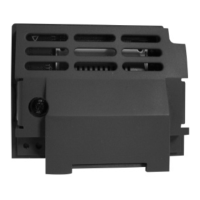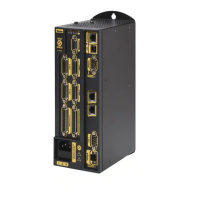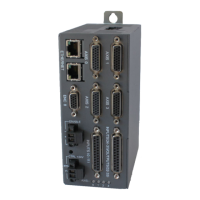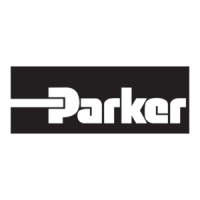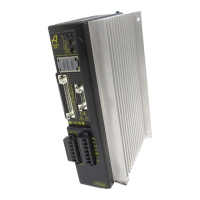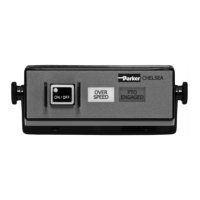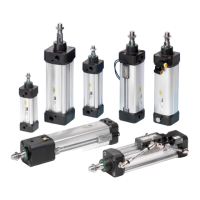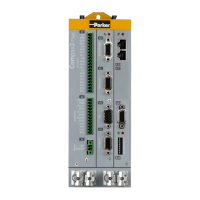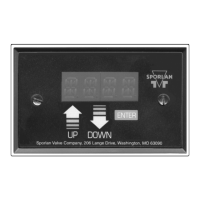Parker Hannifin
For available bit rates and constraints of bus length, see the CiA
Draft standard 301, version 4.02, table 2. The default bit rate is
125Kbit/second. Bit rate and master node numbers are saved with
the ESAVE command.
Transmission Cycle Period
ACR9000 uses a periodic cyclic transmission protocol between the
master and the nodes for digital and analog outputs, and for analog
inputs. Digital inputs transmit to the ACR9000 only when their input
state has changed. Each cycle, the master sends a synchronization
message to all slave nodes. The slave nodes respond by latching
and transmitting back their analog inputs, and by asserting the
output states commanded by the master before the synchronization
message. The cycle period should be calculated to be as fast as
possible, and is dependent on the bit rate, the node types, and the
number I/O bits on the nodes. Two factors limit the speed of the
transmission cycle. One is the total amount data that needs to be
transmitted at the selected bit rate. The other is the processing load
of the slowest node on the bus.
For the former constraint, the number of bits is divided by the bit rate
for the required time. Bits are sent in messages of 125 bits each.
Each node has messages for its data, plus one to report health. The
ACR9000 also sends a sync message. In the formulas below, digital
inputs are ignored, since these will not transmit periodically.
Node messages = (node analog inputs +3)/4 + (node digital
outputs +63)/64 + (node analog outputs +3)/4 + 1
Total messages = Sum of Node messages +1
Required time (milliseconds) = (Total messages * 125) /bit rate in
Kilobits/s
This time should be rounded up to the next higher integer number of
milliseconds. For example, suppose there are two nodes. One node
has 100 digital outputs and 10 each analog inputs and outputs. The
second node has 20 digital outputs and 5 each analog inputs and
outputs. The first node has nine messages, and the second has six
messages. The total is 16 messages. At the 1-megabit rate, 2
milliseconds are required. At the 125K rate, 16 milliseconds are
required.
(16 * 125)/1000 = 2
(16 * 125)/125 = 16
The second constraint is individual node speed. Parker offers the
PIO-337 and PIO-347 fieldbus couplers, and these have been
characterized for speed. The time required depends on the coupler
and the amount and type of I/O on the coupler. There is a base time
required just to respond to the ACR9000’s sync signal, plus additional
time per point. The sum represents minimum type required by the
node. Using the first node of the example above, and the timing in
the table below, the time using a PIO-347 would be 31 milliseconds,
and using a PIO-337 would be five milliseconds. Using the second
Additional Features 129
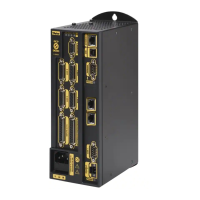
